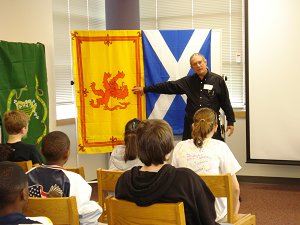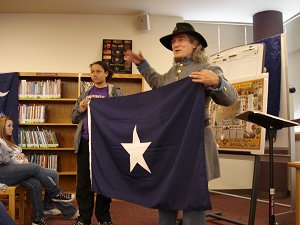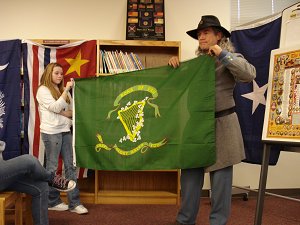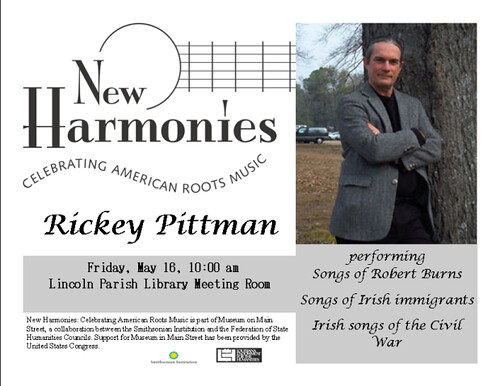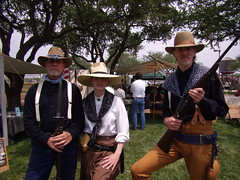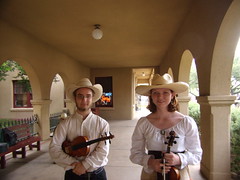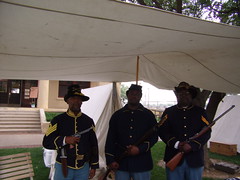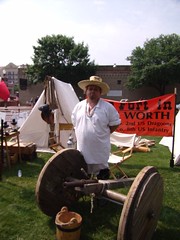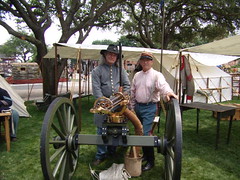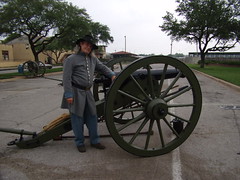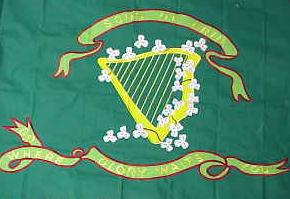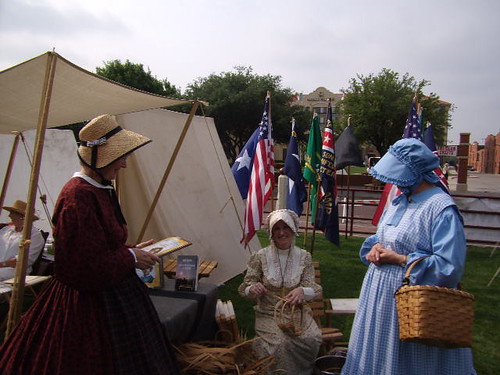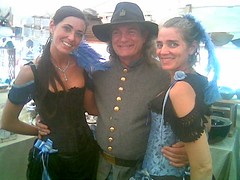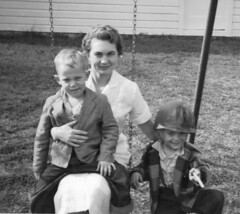This event was definitely up in the top of the list of Civil War reenactments I’ve ever attended. I have never seen a city treat Civil War reenactors so well. They provided us with food, firewood, crates of cold bottled water (and it was very hot!), and many other amenities. I made many new friends, met several school teachers interested in my programs, and stayed up late Friday and Saturday, talking and playing my guitar. I spoke Saturday morning for the Ladies Tea and was so impressed with the beautiful women there. They had such a love for history and for writing. It was heart warming to see whole families there, dressed in period clothes, reliving history. Even the games the kids played were all historically accurate games. The weather was perfect for an event, though the days did get a little warm, especially in combat with those wool jackets.
Unfortunately, this is the last year for the event, as much of the property we were on is being sold by the city of Bellmead. I camped with the 12th (their link is here) and 13th Texas Cavalry (their website is here). We fought as dismounted cavalry. I’ll post the link where you can see photos from the event very soon.
In the hour long battles on Saturday and Sunday, I learned that my long-barreled 3-Band Enfield is hard to load if you’re kneeling, which I learned that skirmishers did often. So, since I plan on doing more of these dismounted cavalry scenarios, I’ll have to buy a musketoon or carbine. A musketoon is a rifle with a short barrel, often used by naval forces (including pirates) and by cavalry because they could be loaded easier on horseback. Here is a photo of one from Wickipedia:

Another unique point about Bellmead: Usually, I’m with the Secessionist soldiers (Confederates) but for both Saturday and Sunday I was in my blue uniform, portraying the 2nd Texas and 5th Kansas respectively. (My grandfather Keel is probably turning over in his grave) In the photo below, I am dressed as a Redleg and holding two very fine black powder Colt revolvers. You can read a great encyclopedia article about the Redlegs here: The distinctive red leggings they wore are of leather. I first heard about them in the movie, Josey Wales. They were a brutal, tough group of men, totally devoted to the Union. Some say, a secret society.
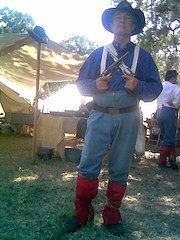
After the event closed down, I packed up and visited the Texas Ranger museum in Waco. This place has been on my “must see” list for many years. You can find the museum’s website here: At last, another goal accomplished. I watched the museum’s 45 minute video about the history of the Rangers, then toured the museum. So many great artifacts. The museum has a gift shop, but they were surprisingly slim on books. I did purchase a lithograph of Quanah Parker that I plan on using in my Texas History program I plan to do next fall. Here is a photo I took of a bronze statue of a mounted ranger in front of the museum.
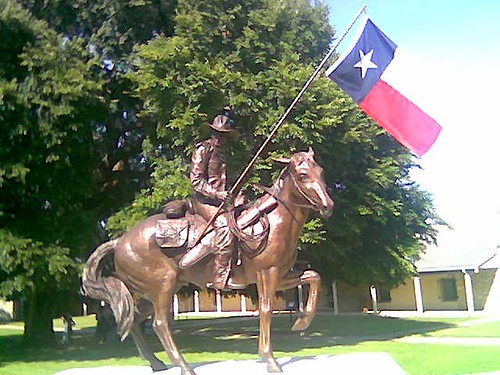
Book Signing and Music Program News:
I have busy days ahead. Check my calendar on my website for complete details.

